How to Treat Your Water to Stay Healthy in the Backcountry
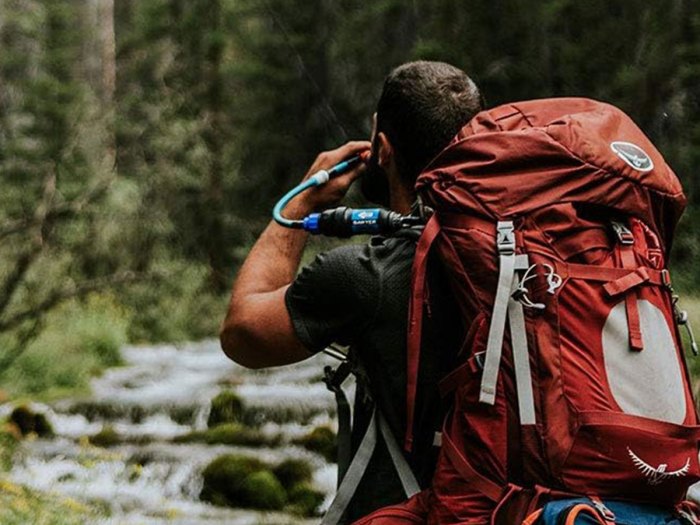
Sickness-causing microorganisms in the water, called “pathogens,” are top reasons hikers bail on a big trip, says Chris Casserly with Outdoor Gear Exchange, an outdoor sports store in Burlington, Vermont. Casserly has conquered New Hampshire’s 4,000-foot peaks in both summer and winter, and has been camping and backpacking in the Northeast for the last 15 years.
“Take water treatment seriously,” Casserly says. “Getting sick on the trails is no fun.”
Getting diarrhea on the trail is one thing, but some illnesses can linger for months. Most nasty pathogens come from animal poop in the water.
In North America, these nasties include parasites, protozoa and bacteria, like giardia, cryptosporidium, e-coli and salmonella.
HOW TO TREAT WATER
Treat all your water, including melted snow. Don’t assume water is clean, even if it looks clear. Choose your water source carefully. Running water is the best, and a murky puddle is the worst, Casserly says.
Fill your bottle from the middle of the source. Skim the surface with your hand to remove insects, leaves and other floaters. Keep particles down by not disturbing the water as you’re filling up. A rainstorm also stirs up particles in a water source, so avoid gathering water right after a storm.
Runoff is often the dirtiest water. If the water you plan to filter and drink isn’t clear, use a prefilter. Prefilters are available for many water filters.
Boiling water also kills waterborne bad guys. Boil water for one minute at sea level, or for three minutes when you’re above 6,500 feet.
Use hand sanitizer after you treat your water. If you get untreated water on your hands, your hands are now dirty. Keep track of dirty and clean bottles, too. If you fill a dirty water bottle with clean water, the water is dirty and needs to be treated again.
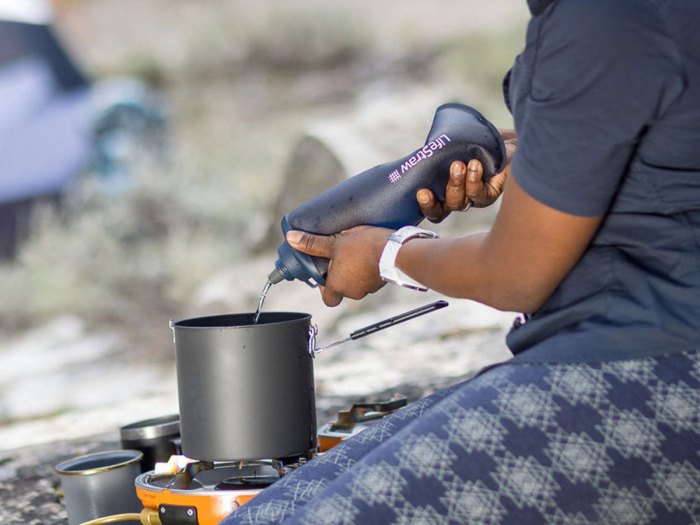
Take good care of your gear. Don’t drop your filter. The impact can crack the filter fibers, preventing water flow.
“Before you hit the trail, test your filter on a bottle filled from your kitchen tap,” Casserly says. “If it’s not flowing or has major leaks, troubleshoot the issue with the manufacturer’s help, or bring the filter to your local shop. If your filter is leaking from the side or if the water isn’t flowing, it might be time to replace your filter cartridge.”
Clean and dry your water treatment gear after you get home from a trip. Most filters come with a backflush option. Backflush your filter with clean water and dry it before you store it.
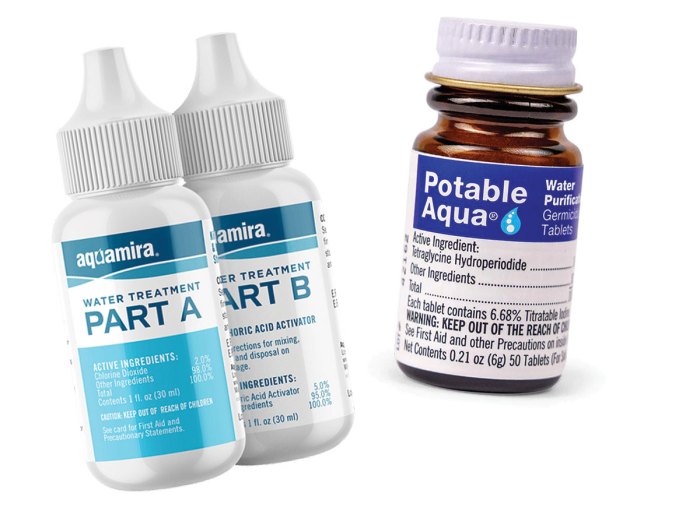
CHEMICAL TREATMENT
The cheapest and easiest way to kill pathogens in your water is a chemical treatment. You can use iodine or chlorine dioxide, which come in tablets or a liquid added directly to your bottle. Effective brands are POTABLE AQUA ($10 for 50 tablets, pharmacalway.com) or AQUAMIRA ($15 for a 1 oz. bottle, aquamira.com).
Chemical treatments are compact, light and can work in as little as 30 minutes. However, they don’t filter matter from your water, so if your water is cloudy, you should prefilter it.
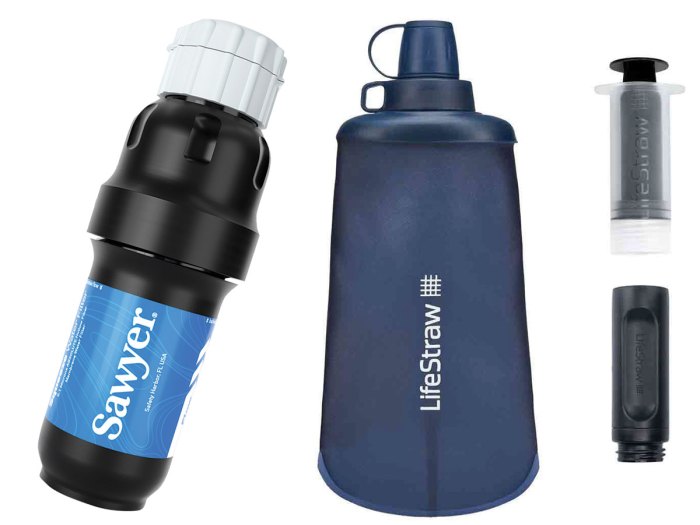
SQUEEZE FILTERS
Casserly’s favorite water treatment is a squeeze filter like the SAWYER SQUEEZE filtration system ($29, sawyer.com), which screws onto the included flasks or a plastic water bottle. Squeeze filters are ideal for individual use. They’re light and inexpensive, and you can drink the water immediately through the filter.
Another top choice is LIFESTRAW’S PEAK SERIES COLLAPSIBLE SQUEEZE 650 ML BOTTLE WITH FILTER ($38, lifestraw.com), which has a sturdy flask with a filter inside, capable of lasting up to 2,000 liters.
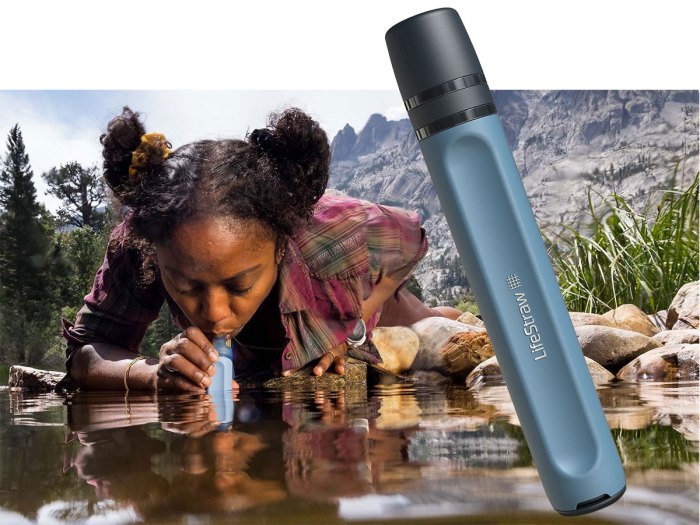
STRAW FILTERS
There’s also the LIFESTRAW PEAK SERIES STRAW ($25, lifestraw.com). Not only does it allow you to drink from the source, but you can also attach it at the end of a hydration hose, screw it onto a standard narrow mouth plastic water bottle or connect it to a gravity filter. But you can’t use it at the water source to easily fill other bottles. Still, it’s a good, light (2.3 oz.) option when you’re backpacking trails with a lot of water along the way.
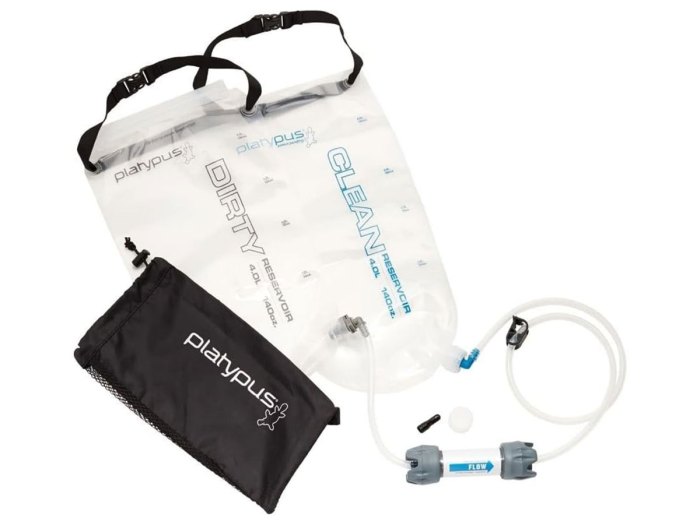
GRAVITY FILTERS
To filter water for big groups, get a gravity filter. PLATYPUS GRAVITYWORKS ($126 for the 2-liter version, $150 for 6 liters, platy.com) is a hanging system with two bags connected by a hose with an inline filter. Using gravity, water flows from the dirty water bag to the clean, filtered one.
Gravity systems clean large amounts of water and some can filter around 1,500 liters before the filter needs to be replaced.
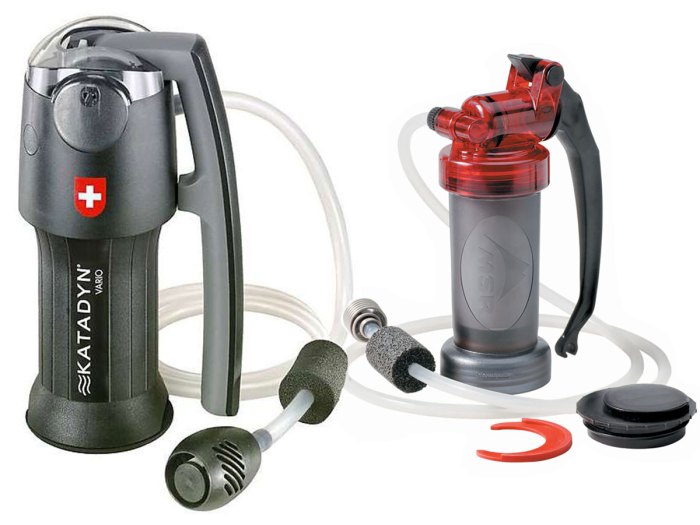
PUMP FILTERS
Pump filters are best for filtering cloudy water. Most have a prefilter to screen out sediment, which can clog a squeeze filter quickly. Pumps are pricey and heavier, but they’re reliable. Most have a carbon filter that makes water taste better, like the MSR MINIWORKS EX MICROFILTER ($120, msrgear.com) and the KATADYN VARIO FILTER ($120, katadyngroup.com).
If you pack a pump, bring a backup chemical treatment just in case.
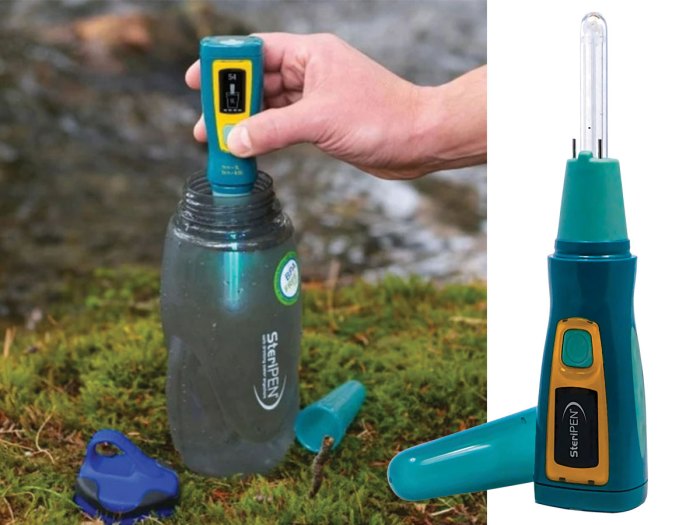
UV PURIFIERS
To eliminate viruses in the water, you’ll need a purifier, not just a filter. Viruses are smaller than bacteria, and a filter can’t trap them. Chemical treatments can kill viruses, and so does ultraviolet light, which KATADYN’S STERIPEN ULTRA UV WATER PURIFIER ($130, katadyngroup.com) uses.
With an ultraviolet light purifier, place the tip of the purifier in a liter of water and stir for about 90 seconds. Ultraviolet purification works best in sediment-free water, but its advantage comes in cold weather. In winter, pumps and filters can freeze, but an ultraviolet light purifier won’t.
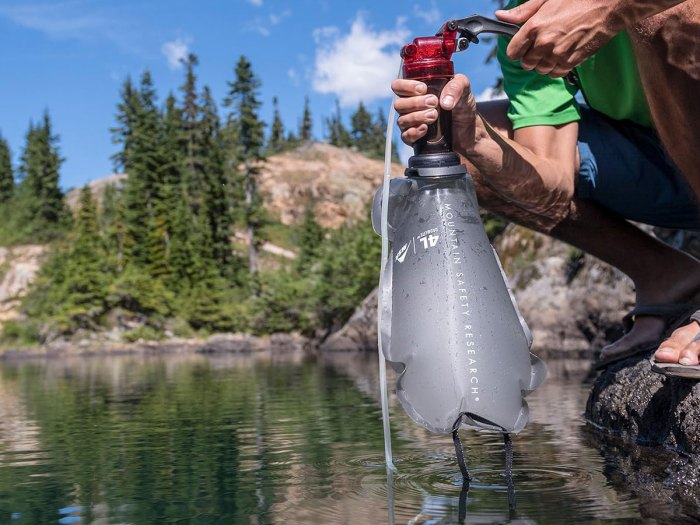
WATER TREATMENT GLOSSARY
WATER FILTERS use microscopic pores to strain out nasty stuff like bacteria from water sources. For most backcountry trips in the U.S., you don’t need more than a filter.
PRE-FILTERS are used to remove large, visible particles before you start the filtering process — particularly important in cloudy water.
WATER PURIFIERS eliminate bacteria, too, but also use chemicals or ultraviolet light to kill viruses, which are too tiny for most filters to remove. Purifiers become more necessary in the deep backcountry or while traveling to some other countries.
Leave a Comment